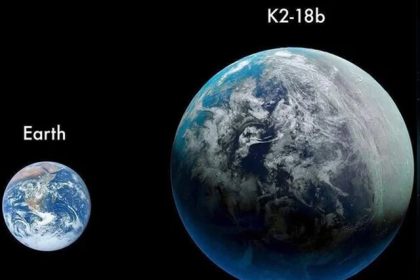Monthly bleeding in women is known as menstruation. During this process, the inner lining of the uterine wall collapses and blood and tissues move towards the cervix. Finally, this blood leaves the body through the vagina. Menstrual bleeding is a part of the monthly cycle called Menstrual cycle Is known. In the rest of this article from Miss and Mr. magazine, stay with us to fully explain the monthly menstrual schedule.
What is the menstrual cycle?
Menstruation or monthly bleeding in women is controlled by hormones. Pituitary gland And Ovaries They are responsible for the production and secretion of hormones. The task of these hormones is to thicken the inner lining of the uterus so that the egg can be placed in the uterine wall in case of pregnancy. During this process a egg It is also released from the ovaries. Ovum towards The fallopian tubes (fallopian tubes) moves and stays there waiting for sperm. If the sperm does not reach the egg, the egg is destroyed and the uterine wall collapses.
The set of this process is a monthly sequence known as menstrual cycle. This cycle from the first The day of menstruation until the first day of menstruation of the following month continues. The interval between two periods and the signs and symptoms are different in women, but the general process and events will be the same.
Stages of the menstrual cycle
Menstrual cycle included 4 steps It is different that the duration of each stage is not the same in different people. The four phases of the menstrual cycle include the following stages:
- Menstrual phase
- Follicular phase
- Ovulation phase
- Luteal phase
In the following, we explain each of these steps in detail.
1. Menstrual phase
This stage is when the period has started and the person experiences monthly bleeding. Considering that the pregnancy has not happened, the wall of the uterus starts to collapse and a mixture of blood, mucus and tissue comes out of the uterus. Also, lack of pregnancy causes Reducing the level of estrogen and progesterone hormones will be. The period is associated with various physical and mental symptoms that are annoying. Of course, period symptoms will not be the same for all women. Including Menstrual phase symptoms The following can be mentioned.
- Mood swings such as impatience
- Emotional sensitivities such as crying
- Muscle cramps
- Breast tenderness
- flatulence
- tiredness
- Headache
- backache
2. Follicular phase

Follicular or proliferative phase (proliferative) starts from the first day of the period and overlaps with the menstrual phase. Based on the average period of 28 days of menstruation, this stage of First day to 14 cycles it happens. The follicular phase begins when the hypothalamus sends signals to the pituitary gland to follicle stimulating hormone (FSH) to secrete As the name of this hormone suggests, its task is to stimulate the ovaries to produce follicles.
Follicles are small sacs that cover immature eggs. Following the release of FSH hormone, the ovaries in About 5 to 20 follicles They are building. Finally, the healthiest egg has reached maturity and the rest of the follicles are absorbed by the body. The follicle provides a nutrient-rich environment for the development of the embryo in case of fertilization. Also, at this stage, with the increase of estrogen hormone, The endoderm layer of the uterus grows and thickens.
3. Ovulation phase
Estrogen hormone increase, in a way stimulating the pituitary gland to secrete luteinizing hormone (LH) Is. The release of this hormone is the beginning of the ovulation phase. This stage is when the body is prepared for conception ready to breed Is. Ovulation means The release of a mature egg from the ovary Is. This mature egg moves to the fallopian tube to be fertilized by sperm.
This step in Day 14 Starting from the menstrual cycle and approx 24 hours it takes time. If there is sperm, fertilization is done and the egg moves towards the uterus. The walls of the uterus are also thick and full of blood and are ready for the presence of the fertilized egg. If fertilization does not take place, the egg dies. During the ovulation phase, women may experience the following symptoms:
- Slight increase in body temperature
- Thicker vaginal discharge with a texture similar to egg white
4. Luteal phase

In the luteal or secretory phase, the follicles that have released their eggs in the previous phase, yellow object becomes. At this stage, the amount of two hormones, estrogen and progesterone, increases again so that the wall of the uterus remains thick for the attachment of the egg. In case of pregnancy, the human chorionic gonadotropin (hCG) hormone is produced in the body, which will lead to the preservation of the corpus luteum and the lining of the uterus.
If there is no pregnancy, the level of estrogen and progesterone decreases and the corpus luteum breaks down. Finally, the uterine wall will shed and the body will prepare for the next menstrual cycle. The average length of this stage 14 days but may vary from 11 to 17 days.
Premenstrual syndrome
Premenstrual Syndrome (PMS) It is the physical and mental states that a person experiences before the onset of monthly bleeding. PMS period is associated with various physical and mental symptoms. This syndrome During the luteal phase It happens during the menstrual cycle. PMS symptoms include the following:
- Headache
- flatulence
- Breast swelling, pain, or tenderness
- Special food cravings
- Mood changes
- Weight Gain
- Changes in libido
- sleep problem
Duration of normal menstrual cycle

After learning about the menstrual cycle, one of the important questions is the interval between two periods. How long is the menstrual cycle? According to scientific sources, the average length of a menstrual cycle 28 days will be. However, this time is not the same for all women. The length of the menstrual cycle between 21 to 35 days It varies in different people.
Calculating each person’s menstrual cycle helps them to know when the bleeding starts and manage menstrual problems in a better way.
Duration of monthly bleeding
The number of period days is not the same for everyone. Most women are usually between 3 to 7 days They bleed, but some women may have monthly bleeding More than 7 days also comet. The amount of bleeding usually has a downward trend, that is, from the beginning of the period, the bleeding is more and decreases towards the end of the period.
At what age does menstruation begin and at what age does it end?
Menstruation is usually from age 12 years old It starts, but it starts in the age range 8 to 16 years old it is normal. In most people, a few years after the onset of puberty symptoms such as the growth of breasts and the growth of extra hair in the genital area, the period also begins.
By logging in MenopauseThe monthly bleeding also stops and the person goes through the fertile period. Entering menopause Usually at the age of 51 it happens
The onset of menarche is associated with irregular periods, which after some time become normal and the person experiences a regular menstrual cycle. On the other hand, before entering the menopause period, periods become irregular and eventually stop altogether.
Calculation of the menstrual cycle

According to the symptoms and problems of menstruation, women should be aware of the approximate time of the beginning of their bleeding period. Due to many busy schedules, it will not be easy to remember and calculate the menstrual cycle and pregnancy. Thanks to programs and applications that can be installed on smartphones, calculating the menstrual cycle and ovulation has become easy.
In addition to a variety of menstrual programs Calculation of period timeYou can also enter various information such as duration and intensity of menstruation, breast changes, headaches, body temperature, sleep time, sexual activities, etc. in order to determine the changes of the menstrual cycle in a better way. Of course, there are methods to calculate the menstrual cycle online that can be used.
Various applications have been designed to measure the period period for IOS and Android, which are called Types of menstrual cycle calculation software are known We have introduced some of these applications in the table below.
| application | Android | iOS |
| My Calendar | ✓ | ✓ |
| Flo app | ✓ | ✓ |
| My Period | ✓ | ✓ |
| Ray menstruation registration application | ✓ | ✓ |
| Period Plus | ✓ | |
| Glow app | ✓ | |
| Period Tracker Lite | ✓ |
Be aware of your menstrual cycle

In this article, we introduced the 28-day menstrual cycle and monthly menstruation and introduced the duration of the menstrual cycle. Keep in mind that very irregular periods are possible A sign of disease or hormonal problems be; For this reason, women should be fully aware of their period and check it. In this context, applications and programs for checking the period will be helpful so that you do not forget the time of your period.
Frequently Asked Questions
What is the menstrual cycle?
Menstrual cycle is a change in women’s body that prepares the body for possible pregnancy. This cycle will be accompanied by changes in the uterus and ovulation. Menstrual cycle has 4 phases called menstrual, follicular, ovulation and luteal phase.
How many days is the menstrual cycle and monthly bleeding?
The average menstrual cycle is 28 days, but it may vary between 21 and 35 days. The duration of women’s periods or bleeding also varies between 3 and 7 days, which can continue for more than 7 days in some women.
What is premenstrual syndrome (PMS)?
Premenstrual syndrome is a physical and mental change in women that begins before bleeding and in the luteal period and may continue until the middle of the period.
How to control period times?
Various applications have been designed for mobile phones to record time and periods. By using these programs and controlling period periods, time fluctuations can be checked.
References:
ncbi.nlm.nih
healthline.com
RCO NEWS
RCO
















